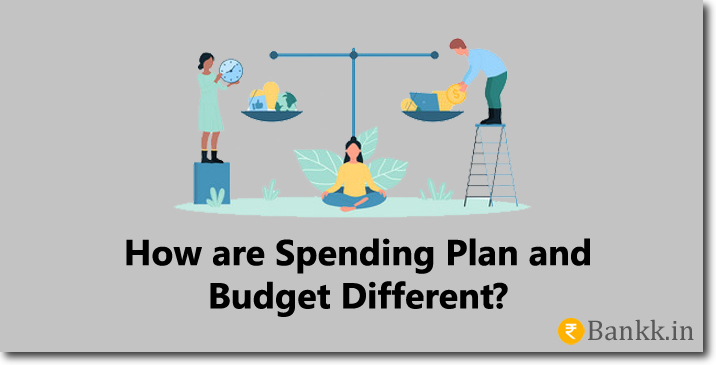A spending plan is an essential tool for managing your finances and achieving your financial goals. It helps you to prioritize your spending, save money, and avoid debt. In this article, we will discuss the importance of a spending plan, how it differs from a budget, and provide a comprehensive guide to creating your own spending plan.
Why is a Spending Plan Important?
A spending plan is a proactive approach to managing your money. It allows you to take control of your finances by allocating your income towards your expenses, savings, and financial goals. By creating a spending plan, you can ensure that you are living within your means and avoiding unnecessary debt.
The distinction between Spending Plan and Budget
While a spending plan and a budget may seem similar, there are some key differences between the two. A budget is a restrictive plan that dictates how much you can spend in each category of expenses. On the other hand, a spending plan is more flexible and focuses on prioritizing your expenses and allocating your income toward your financial goals.
The Prerequisites:
There are two prerequisites before you can create your plan. So let us first explore those and then learn the process to create your plan.
1. Assessing Your Financial Situation
Before creating a spending plan, it is important to assess your current financial situation. This involves determining your income and analyzing your expenses.
- Determine Your Income: The first step in assessing your financial situation is to determine your income. This includes all sources of income such as your salary, rental income, investment returns, and any other sources of regular income.
- Analyze Your Expenses: The next step is to analyze your expenses. This involves categorizing your expenses into essential and non-essential expenses. Essential expenses are those that are necessary for survival such as housing, food, transportation, and healthcare. Non-essential expenses are those that are not necessary for survival such as entertainment, dining out, and vacations.
2. Setting Financial Goals
Once you have assessed your current financial situation, the next step is to set financial goals for yourself. These goals can be short-term or long-term in nature.
- Short-Term Goals: Short-term financial goals are those that can be achieved within a year or less. These may include saving for a trip, paying off your high interest-rate debts, or building an emergency fund.
- Long-Term Goals: Long-term financial goals are those that take longer than a year to achieve. These may include saving for retirement, paying off student loans or mortgage debt, or saving for a down payment and EMI payments on a home.
Creating Your Spending Plan
Now that you have assessed your financial situation and set financial goals, it’s time for the creation of the plan.
1. Prioritize Essential Expenses
The first step in creating your spending plan is to prioritize essential expenses such as housing, food, transportation, and healthcare. These expenses should be allocated first in your spending plan as they are necessary for survival.
Housing expenses include rent or mortgage payments, utilities, and maintenance costs. Food expenses include groceries and dining out. Transportation expenses include car payments, fuel, and public transportation costs. Healthcare expenses include insurance premiums and prescription medication costs.
It’s important to accurately estimate these essential expenses and allocate sufficient funds toward them in your spending plan. This will ensure that you are able to cover these necessary costs and avoid financial stress.
One way to accurately estimate essential expenses is to track your spending for a month or two and calculate the average monthly cost for each category. You can also use online tools or apps to help you track your spending and create a realistic spending plan.
Once you have prioritized essential expenses, you can then allocate funds toward non-essential expenses and savings goals.
2. Allocate for Non-Essential Expenses
After prioritizing essential expenses, the next step is to allocate funds for non-essential expenses such as entertainment, dining out, and vacations. These expenses are not necessary for survival but can enhance your quality of life.
It’s important to allocate funds for non-essential expenses in moderation so that you can still achieve your financial goals. This involves setting a budget for each category of non-essential expenses and sticking to it.
One way to allocate funds for non-essential expenses is to use the “50/30/20 rule.” This rule suggests allocating 50% of your income towards essential expenses, 30% towards non-essential expenses, and 20% towards savings and debt repayment.
Another way to allocate funds for non-essential expenses is to use the “envelope system.” This involves setting a budget for each category of non-essential expenses and placing the allocated funds in an envelope. Once the funds in the envelope are depleted, you cannot spend any more money in that category until the next budgeting period.
By allocating funds for non-essential expenses in a responsible manner, you can enjoy life’s little luxuries while still achieving your financial goals.
3. Establish Emergency Fund and Savings
It’s important to establish an emergency fund and allocate funds towards savings in your spending plan. An emergency fund is a savings that is used to cover unexpected expenses such as car repairs or medical bills. Allocating funds towards savings can help you achieve your long-term financial goals.
An emergency fund should ideally contain enough money to cover three to six months’ worth of essential expenses. This will provide funds to manage your things in case of job loss, illness, or other unexpected events. You can start building your emergency fund by setting aside a small amount of money each month until you reach your goal.
In addition to an emergency fund, it’s also important to allocate funds towards savings for long-term financial goals such as retirement, a down payment on a home, or a child’s education. One way to save for these goals is to start SIP.
By establishing an emergency fund and allocating funds towards savings in your spending plan, you can prepare for the unexpected and achieve your long-term financial goals
Monitoring and Adjusting Your Plan
Once you have created your plan, it’s important to regularly review it and make necessary adjustments.
- Regularly Reviewing Your Plan: It’s important to regularly review your spending plan to ensure that you are staying on track with your financial goals. This involves tracking your expenses and comparing them to the allocations in your spending plan.
- Making Necessary Adjustments: If you find that you are overspending in certain categories or not meeting your savings goals, it may be necessary to make adjustments to your spending plan. This may involve reducing non-essential expenses or increasing the amount allocated towards savings.
Tips for Successful Implementation
Here are some tips for successfully implementing the plan that you have created.
- Communication and Accountability: If you share finances with someone else such as a spouse or partner, it’s important to communicate about what you have planned and hold each other accountable for sticking to it.
- Stay Consistent: Consistency is key when it comes to successful implementation. Make sure to regularly review and adjust the plan as needed.
Conclusion
Creating this plan is an essential tool for managing your finances and achieving your financial goals. By assessing your financial situation, setting financial goals, and creating a comprehensive plan, you can take control of your finances and avoid unnecessary situations such as bankruptcy by effectively managing debt repayment through budgeting.



